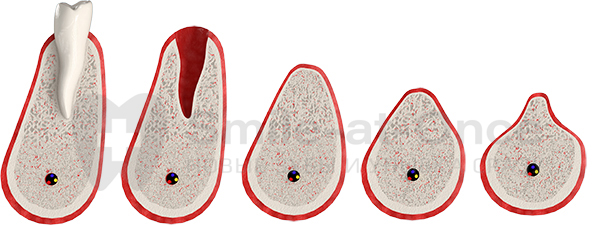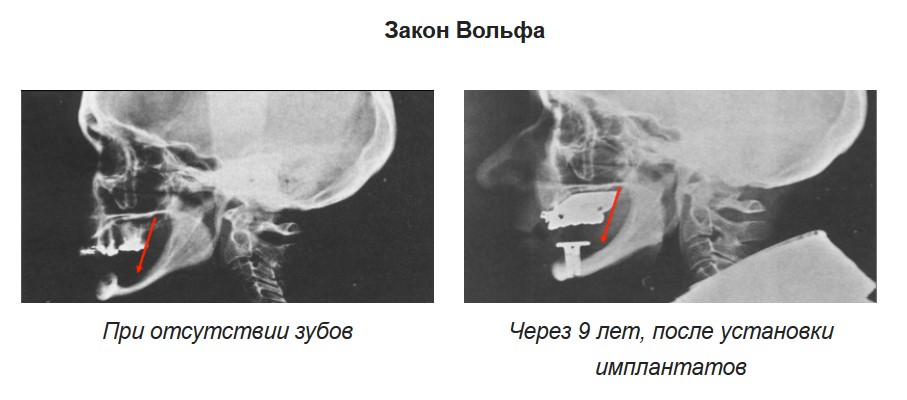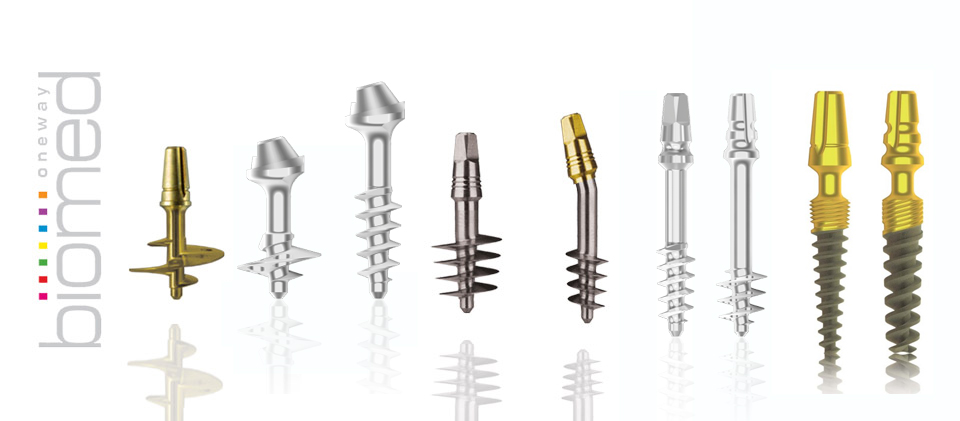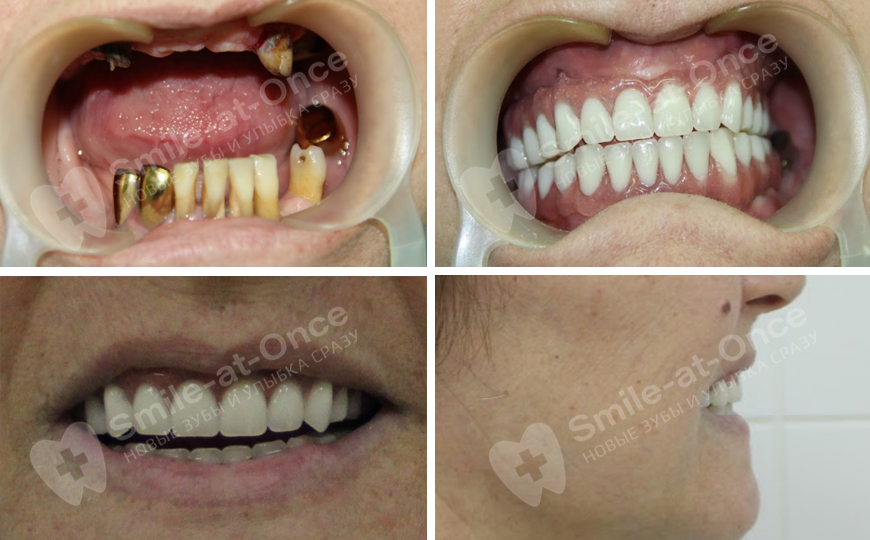Basal dental implantation from experts
Basal dental implantation from experts
Basal dental implantation is a technique that allows you to install implants in the hard parts of the jaw bone: the basal layer and cortical plate. Thus, it is possible to effectively solve the problem of full or partial adentia even with severe atrophy of the jawbone.
A feature of basal implantation, in comparison with other methods, is that implants are loaded with dentures almost instantly. Hence the original name of the treatment protocol - this is implantation with instant loading or Immediate Load Implantation.
And the terms express, basal, single-phase, simultaneous implantation, etc. - these are all advertising tricks of dentistry that try to stand out in the market.
In this article, we will analyze each name and tell in detail about the technology of implantation with instant loading so that patients can understand how the treatment process occurs and what is the uniqueness of the technique.
Implantation with instant loading has received many synonyms, due to its distinctive properties:
- Implantation with immediate loading or Immediate Load is the main name of the method, which is actively used in classification both in Russia and abroad. It is explained by the fact that the prosthesis is fixed on installed implants in an extremely short time - 2-3 days after implantation,
- basal implantation - the second most common name. It arose due to the fact that in addition to the central alveolar or spongy section, the implants are inserted into the basal (the deepest, strongest and most sterile), using the cortical plate (the shell of the jaw bone).
- express implantation - an advertising move, meaning that the patient restores the root of the tooth and its crown part almost simultaneously,
- simultaneous dental implantation - the installation process of the implants immediately after tooth extraction (in the hole) is characterized, which is applicable both for the classical implantation protocol and for implantation with instant loading,
- single-stage or single-phase implantation - also an advertising move, implies that the installation of the implant and the prosthesis pass in one stage (phase),
- one-piece or monoblock implantation - the term is quite rare, sometimes used in dental circles and does not characterize the technique, but the type of implant used for instant loading. As a rule, they are one with the root part of the implant and the abutment on which the prosthesis is attached - that is, they are integral and non-separable,
- minimally invasive or transgingival implantation - means that the implants are installed by puncture without incision of soft tissues, immediately through the gum or into the hole of the tooth just removed (simultaneously),
- compression implantation - the name comes from the method of screwing the implants into the bone according to the principle of the “self-tapping screw”, that is, the own bone tissue is not lost during the formation of the bed, but lends itself to compression or compaction, creating excellent conditions for the primary stability of the implants.
Implantation technique with immediate loading did not arise a couple of years ago. It has been actively developing for several decades, many manufacturers offer implants for immediate prosthetics in their assortment (including, for example, Nobel, the very first company to launch classical implants on the market, created under the direction of their creator, Dr. Branemarck, and later patented ALL-ON-4 technology).
Indications
|
Contraindications
|
Basal implantation with immediate loading of the prosthesis has much less contraindications than the classical protocol. For example, it can and should even be carried out in acute inflammatory periodontal processes.
Diseases of the teeth and gums, smoking, periodontitis, as well as poor oral hygiene are not contraindications for implantation - it is enough to stop the acute period, to qualitatively remove all bacteria and germs from the oral cavity.
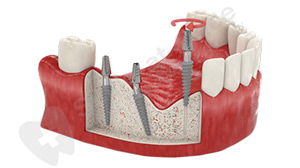 This approach in 90% is recommended in the absence of a large number of teeth or at least 3 in a row. If only one tooth is missing in a row, this technique is applicable and works successfully, but it is important for the patient to understand that for single restorations the requirements for bone tissue are higher and, most likely, artificial bone and gum grafting will be necessary.
This approach in 90% is recommended in the absence of a large number of teeth or at least 3 in a row. If only one tooth is missing in a row, this technique is applicable and works successfully, but it is important for the patient to understand that for single restorations the requirements for bone tissue are higher and, most likely, artificial bone and gum grafting will be necessary.
How does tooth extraction affect the condition of the jawbone?
Human bone tissue consists of three layers: the central cancellous bone, the deep basal region and the cortical plate, that is, the membrane. Dental roots, located in the spongy bone, actively affect the multiple capillaries located in it - due to this, nutrition and oxygen saturation of the tissue occur. As soon as the roots of the teeth are removed, the system of work is broken and the bone tissue (namely, the spongy section) is reduced - the concept of atrophy of bone tissue arises.At the same time, the basal and cortical layers of atrophy are not exposed, since they consist of mineral salts and bone partitions, that is, they can be safely used to install implants. They throughout the life of a person remain as strong and sterile as possible.
Bone tissue atrophy: how to restore teeth?
Bone tissue atrophy complicates not only implantation, but also conventional prosthetics, since the gum sags along with the bone, and the alveolar ridge may become too narrow.
In order to install classical implants, a sufficient volume of the central bone section is required. If it is not enough, a preliminary build-up or sinus lift on the upper jaw is required. Ordinary prostheses can be installed, but their regular relocation will be required, because the level of gums and bone tissue due to lack of load will be reduced anyway.
Immediate loading basal implantation is the only method that can be performed in 90% of cases without first increasing bone volume. An important feature of the method is that implants, special in shape and installation method, allow working with all three departments of bone tissue.
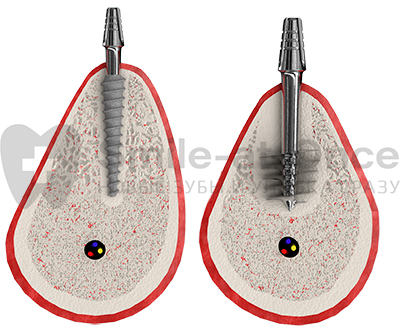 When implants are screwed in, a dense cortical layer or a hard shell of bone tissue is formed around them, which provides excellent primary stabilization of the structures and is a kind of foundation. It does not dissolve for many months and is replaced by the main bone only as it actively grows and penetrates the porous coating of the implants.
When implants are screwed in, a dense cortical layer or a hard shell of bone tissue is formed around them, which provides excellent primary stabilization of the structures and is a kind of foundation. It does not dissolve for many months and is replaced by the main bone only as it actively grows and penetrates the porous coating of the implants.
When applying the basal implantation technique with immediate loading, the implants can be installed even at an angle, which allows you to bypass the most atrophied areas of the bone and to do without its preliminary growth, even in especially difficult cases.
Implant features with immediate loading for bone atrophy
The peculiarities of implantation in acute bone atrophy were shared with us by the chief doctor of the Moscow clinic "SMILE-AT-ONCE" maxillofacial surgeon-implantologist, a member of the Russian Association of implantologists and a member of the International Implant Foundation Nikolay Vladimirovich Namdakov, who was one of the first in Russia to start active study and application of the Immediate Load implantation protocol.
“Today, the trend is that patients are not ready to wait several years before installing prostheses on implants. Restoring the process of bone cell regeneration, shortening the treatment time, faster rehabilitation, a minimum of surgical intervention and an aesthetic result are what modern implantology is striving for. We offer patients a comprehensive solution to the problem of tooth restoration, depending on the degree of bone tissue discharge. These are the technologies “all-on-4”, “all-on-6” and directly BASAL COMPLEX for severe atrophy of bone tissue or severe conditions for the development of periodontal disease and generalized periodontitis. Each of the methods is used for certain indications - with a small, medium and severe degree of atrophy, respectively. ”
Implant types with immediate loading:
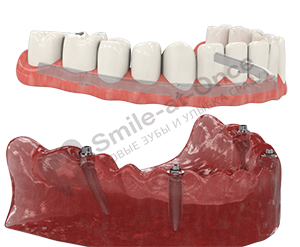 “All-on-4”: the technology involves the use of 4 implants to restore the complete dentition (2 of them are fixed in the front, 2 in the side, and they are installed at an angle of 45 degrees to increase the area of contact with bone tissue). It is used with a sufficient volume of bone tissue or slight atrophy. The prosthesis is fixed for 2-3 days after surgery,
“All-on-4”: the technology involves the use of 4 implants to restore the complete dentition (2 of them are fixed in the front, 2 in the side, and they are installed at an angle of 45 degrees to increase the area of contact with bone tissue). It is used with a sufficient volume of bone tissue or slight atrophy. The prosthesis is fixed for 2-3 days after surgery,- "All-on-6": 6 implants are used to restore the complete dentition. Due to the increase in pivot points (compared to "all-on-4"), prosthetics can be performed in conditions of moderate bone atrophy.
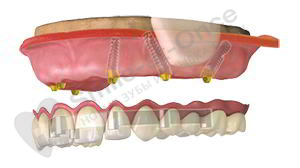 Two implants are installed in the frontal zone, four others - in the lateral, again at a certain angle, bypassing atrophied sections of bone tissue, so as not to damage the mandibular nerve and sinuses.A permanent fixed prosthesis is installed 2-3 days after the operation. Read more about the difference between ALL-ON-4 and ALL-ON-6 prosthetics.
Two implants are installed in the frontal zone, four others - in the lateral, again at a certain angle, bypassing atrophied sections of bone tissue, so as not to damage the mandibular nerve and sinuses.A permanent fixed prosthesis is installed 2-3 days after the operation. Read more about the difference between ALL-ON-4 and ALL-ON-6 prosthetics. - complex basal implantation: used under conditions of acute atrophy of bone tissue.
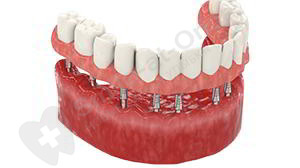 To restore the dentition, 8 to 12 implants are required. They are distinguished by a special design and antimicrobial coating, which allows them to be installed in the basal and cortical parts of bone tissue, without the risk of developing inflammatory processes around the body of the implant. A fixed prosthesis, as with other techniques, is installed 3-4 days after implantation.
To restore the dentition, 8 to 12 implants are required. They are distinguished by a special design and antimicrobial coating, which allows them to be installed in the basal and cortical parts of bone tissue, without the risk of developing inflammatory processes around the body of the implant. A fixed prosthesis, as with other techniques, is installed 3-4 days after implantation.
Key points of modern implantation Immediate Load:
- implants: for implantation with immediate loading, both single-component implants and two-component ones with angular abutments are used. The ability to change the position of the abutment allows prosthetics to align the position of the prosthesis and even restore the correct bite.
- predictability of results: High technologies of 3D diagnostics and planning allow you to pre-calculate the placement of implants to the smallest detail, as well as the parameters of the future prosthesis, so as to prevent damage to the jaw nerve, sinuses and recreate the correct occlusion (load distribution from chewing throughout the dentition).
- implant fixation: artificial roots in bone tissue are fixed in an atraumatic manner using a special surgical template, which is created according to the parameters of the 3D model. The template eliminates the risk of medical error and install implants with minimal damage to soft and bone tissues. Instead, the gum is pierced and the implant is screwed into the bone. This approach provides maximum sterility, and therefore significantly reduces the risk of tissue inflammation and subsequent implant rejection. In addition, there is a clear plus for the patient - rehabilitation after surgery is quick and very comfortable, without pain and swelling,
- minimal implant placement restrictions: implants for basal implantation can be installed even at an angle (classic - only parallel to each other). This allows you to bypass the bone with a small volume, to use a large area of the bone horizontally if its height is not enough. An additional stability is given to implants by a durable prosthesis that connects them together and fixes them in a stationary state,
- no bone volume limits: in 90% of cases, it is possible to do without tissue buildup before installing implants. That is, implantation is possible regardless of the state of the jawbone,
- immediate prosthetics: dentures are installed 2-3 days after implantation (for which prostheses you can choose, read on). Firstly, they stabilize artificial roots, and secondly, they help provide nutrition to bone cells - by transferring the load on the implants when chewing, the jaw bone capillaries work actively, transferring nutrients to the cells. Due to this, the activation of natural processes takes place, and the bone is restored many times faster,
- periodontitis and periodontosis are not limitations: Implantation with immediate loading is the only technique that is carried out in acute inflammatory processes on the gums.
Implant types for immediate loading implants
“Implants for immediate loading today are produced by a sufficiently large number of companies, including well-known brands such as Nobel, Oneway Biomed, BioHorizons, Ankylos, Osstem. These brands have existed on the world market for at least 20 years and have proven clinical studies in the long term. This suggests that the technique has really proven itself and is actively being promoted all over the world, ”said Nikolai Namdakov, head doctor of the Moscow clinic of innovative technologies“ SMILE-AT-ONCE ”.
Every year, an increasing number of manufacturers of two-stage implants add solutions for Immediate Load.Some of them have only a few models in the line for immediate loading, for example, Nobel - the founder of all dental implants, BioHorizons, HI-Tec, Impro, Ankylos, Osstem, Alpha Dent.
Others specialize in developing models specifically for this protocol. For example, Ihde Dental and Oneway Biomed (Switzerland) are the first to market multifunctional solutions for immediate loading about 40 years ago, and today have numerous clinical results with their products.
There are also other younger brands, for example, systems: Triton Titanium (Germany) - use short cylindrical and hollow body implants, Noris Medical (Israel) - emphasize long ZYGOMA implants for fastening in the zygomatic bone, Roott implants (Rutt) - A slightly modified and more expensive implant system, borrowed most of the development from the pioneers Oneway Biomed and Ihde Dental. Despite the loud statements about the effectiveness of new brands, their clinical results in the long term have not yet been compiled due to the fact that the systems entered the market only a couple of years ago, so most implantologists are cautious or not even aware of them.
Implantation Stages
- preparation: assessment of the state of bone tissue and the body, passing tests, choosing a place for installing implants,
- three-dimensional modeling of the treatment process,
- direct installation of prostheses and casting,
- adaptation of abutments,
- prosthesis manufacturing and fixation.
Immediate-load implant prosthetics
During implantation with instant loading, there are no restrictions on prosthetics - both permanent and removable dentures can be fixed on metal artificial roots. However, in acute atrophy of bone tissue for the first few years, prostheses made of metal-plastic or plastic with the addition of diamond chips (a light material that can be easily adjusted if necessary) with an elastic gum created from soft and aesthetic, modern and hypoallergenic materials are selected.
The elastic gum allows you to hide the broken aesthetics and the natural mucosa sagging along with the bone. It is completely invisible and does not cause discomfort. And plastic, which is used to make crowns, allows the prosthesis to be relocated directly to the patient’s mouth with occlusion changes after implant placement.
“In our clinic, we offer patients a fixed prosthesis made of plastic on a metal frame. We carefully work through each crown so that the patient receives new teeth that are as close as possible in functionality and appearance to natural teeth. In the manufacture of the prosthesis, diamond crumb is added to the plastic, which makes the material more durable and aesthetic, and the crowns have a peculiar shine inherent in living teeth. Therefore, there is no need to replace such a prosthesis a year after the complete implant has been implanted; it will last 3-5 years, ”adds Nikolai Namdakov.
Dentures are most often fixed with a screw fastener - a small screw is screwed through the crown top into the abutment. Unlike the cement system, when the prosthesis is glued using adhesive dental cement, such a system is more practical - if necessary, the prosthesis can be easily removed without damage, rather than being sawn.
Prosthetics with this technique is carried out for 2-3 days after implantation. And this is due not only to the desire to help the patient return to their usual lives as quickly as possible, but also to functional necessity.
Firstly, the installed prosthesis stabilizes and connects the implants. Secondly, it allows the activation of natural processes in bone tissue and accelerates the processes of its restoration. Thirdly, it normalizes the state of the bite and even the shape of the face - wrinkles disappear, muscle activity is restored, a person gets rid of psychological discomfort.Fourth, 1-2 days after surgery are necessary for the regeneration of the gingival tissue - so that the mucous membrane heals, and the installed prosthesis does not injure it.
Implant life with immediate loading
With a careful attitude, implants that have taken root will last a lifetime, since titanium is absolutely biocompatible with the body. Naturally, the patient himself needs to monitor his health, timely treat diseases of the teeth, gums and do not forget about hygiene.
Cermet prostheses will last 10-12 years, but are easily updated without replacing implants. If you choose crowns from modern zirconium dioxide, then this design will last at least 20 years.
The cost of basal implantation
The tables below demonstrate a comparison of prices for delayed and immediate loads using implants of various systems for complete prosthetics of the teeth on 1 jaw. The analysis showed that Immediate Load technologies are not only faster, but also much cheaper than a similar design on two-stage implants.
Table:
DELAYED LOAD
DENTAL RESTORATION FROM 6 TO 12 MONTHS
excluding cost for targeted bone tissue regeneration, if necessary
| Turnkey 1 jaw solution with MP denture |
Osstem |
Noris medical | Roott | Nobel |
| On 4 implants |
From 150 000 rub. |
From 350 000 rub. | From 250 000 rub. | From 450 000 rub. |
| On 6 implants |
From 280 000 rub. |
From 450 000 rub. | From 350 000 rub. | From 650 000 rub. |
| On 8-10 implants |
From 450 000 rub. |
From 700 000 rub. | From 410 000 rub. | From 850 000 rub. |
* Source: sites of clinics where these implant systems are used as of the end of 2016
Table:
IMMEDIATE LOAD
DENTAL RESTORATION FROM 2 TO 7 DAYS
(Directed bone regeneration is not required in 90%)
| Turnkey 1 jaw solution | Oneway biomed | Noris medical | Roott | Nobel |
| ALL-ON-4 |
From 180 000 rub. |
From 300 000 rub. | N / a | From 450 000 rub. |
| ALL-ON-6 |
From 220 000 rub. |
From 350 000 rub. | N / a | From 650 000 rub. |
| BASAL COMPLEX (8-12 implants) |
From 250 000 rub. |
N / a | From 295 000 rub. | N / a |
* Source: sites of clinics where these implant systems are used as of the end of 2016
Reviews of patients choosing this type of implantation:
- The dentist told me about the method of basal implantation when I had to remove another tooth. I very much doubted the choice of the method of tooth restoration. In fact, this operation turned out to be a fairly simple procedure. One of the advantages is that after ten days I was able to eat my favorite foods and enjoy my smile.
- I had only two teeth left on the upper jaw, on the lower jaw there were also several teeth. The thought that I would have to wear a removable denture led me to despair. The dentist convinced me that my case was suitable for implantation with the immediate installation of a prosthesis. I was very surprised, but agreed. Now I have wonderful teeth and I can smile freely.
- For three years I used removable dentures. There are very few teeth in the mouth. My dentist suggested a basal implant, but on condition that I give up smoking. I reluctantly agreed. After the operation, I felt unwell, there were painful sensations in my mouth and I really wanted to smoke. Three days after the operation, a prosthesis was installed and, when I saw my new teeth, I received a lot of positive emotions.
- A few years ago she did basal implantation. First, light plastic crowns were placed, and a year later - from cermets. Teeth like real. So far there have been no problems.

